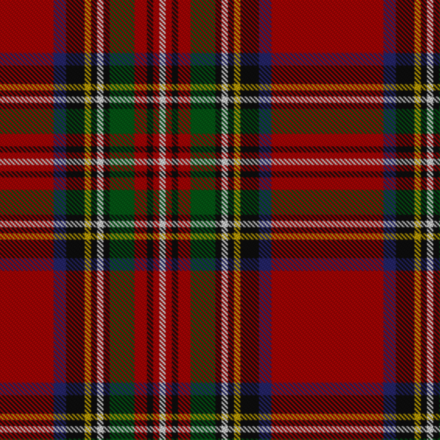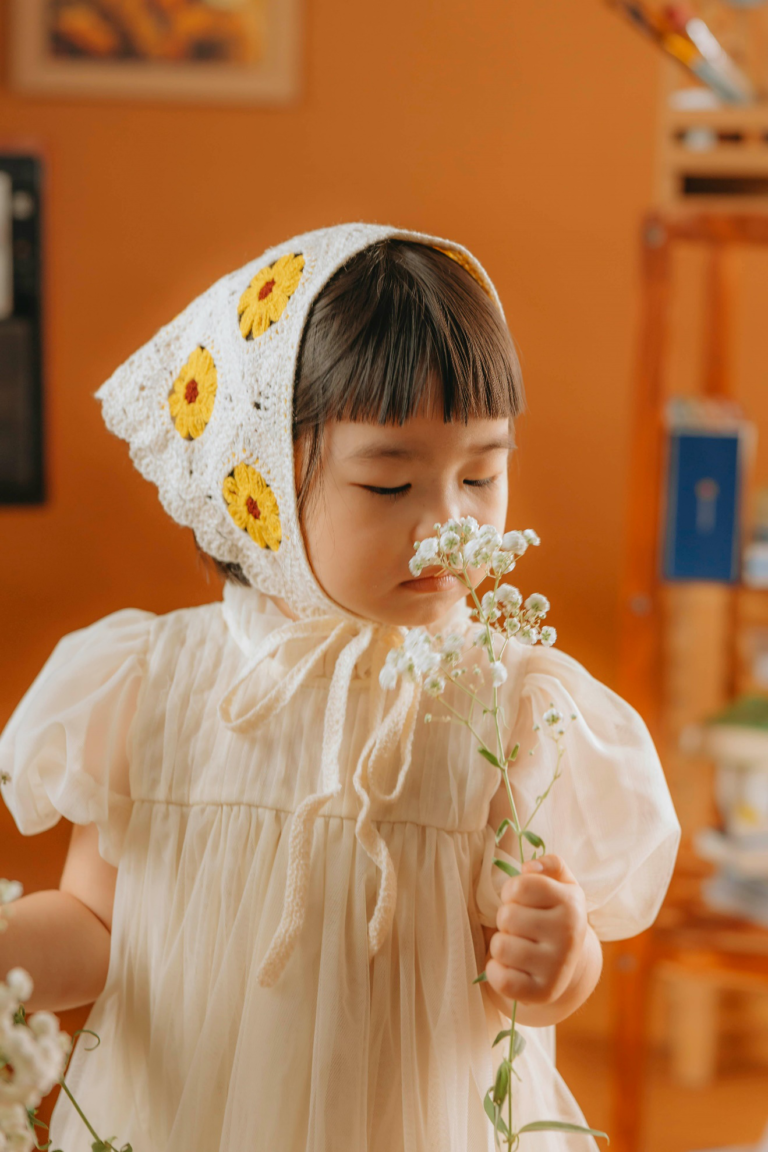Royal Stewart Tartan | The Most Popular of Prints
In the world of fashion, certain patterns possess a timeless allure that transcends fleeting trends. The Royal Stewart Tartan stands as a prime example, revered globally for its enduring elegance and regal associations. Originating from the House of Stewart, this iconic tartan features a striking combination of colors—vivid red intersected with lines of white, yellow, blue, and black—that create a visually captivating design. Its roots in Scottish heritage and its association with British royalty, notably popularized by Queen Victoria in the 19th century, have solidified its status as a symbol of prestige and cultural significance. The Royal Stewart Tartan’s journey from royal tartan to global fashion icon underscores its enduring appeal. Its distinctive pattern, characterized by a bold red base and intersecting lines of contrasting colors, has made it a staple in both traditional Scottish attire and modern fashion. What sets the Royal Stewart Tartan apart is not just its aesthetic appeal but also its versatility. It seamlessly transitions from formal to casual settings, from high-end couture to everyday wear, making it a favorite among designers and fashion enthusiasts alike. The tartan’s ability to evoke both heritage and contemporary style ensures its relevance in an ever-evolving fashion landscape.
A Fashion Icon
When discussing tartans, the Royal Stewart Tartan inevitably emerges as the epitome of timeless elegance and cultural symbolism. Its origins trace back to the Scottish House of Stewart, where it served as a distinctive marker of clan identity and nobility. However, its ascent to global recognition came during the Victorian era, when Queen Victoria’s patronage elevated it to the status of a royal tartan. Since then, it has been embraced not only within aristocratic circles but also by fashion designers who have reimagined its classic motif in innovative ways. The enduring allure of the Royal Stewart Tartan lies not just in its rich history but also in its adaptability. This iconic pattern has transcended its traditional roots to become a fixture in contemporary fashion. From runway collections to streetwear, the tartan’s vibrant hues and intricate design elements continue to inspire new generations of designers and fashion enthusiasts. Its ability to blend heritage with modernity makes it a versatile choice for those seeking to make a statement with their wardrobe.
Why the Royal Stewart Tartan?
The Royal Stewart Tartan’s appeal can be attributed to several factors that have contributed to its enduring popularity. Firstly, its association with British royalty lends it a sense of prestige and historical significance. As the tartan of the House of Stewart, it carries with it centuries of noble tradition and cultural heritage, making it a symbol of aristocratic elegance. Secondly, its vibrant color palette and intricate design make it visually striking and easily recognizable, ensuring it stands out in any fashion ensemble.
Moreover, the tartan’s versatility is another key factor in its lasting appeal. Unlike some patterns that are limited to specific occasions or seasons, the Royal Stewart Tartan seamlessly transitions between formal and casual settings. Whether worn as a statement piece in a tailored blazer or as a subtle accent in accessories like scarves or bags, it adds a touch of sophistication to any outfit. This adaptability has cemented its place not just in traditional Scottish attire but also in contemporary fashion trends worldwide.
Celebrity Endorsement
Beyond its historical and cultural significance, the Royal Stewart Tartan has garnered acclaim in the realm of celebrity fashion. Renowned designers and celebrities alike have embraced its timeless allure, incorporating it into their collections and personal wardrobes. Design houses such as Alexander McQueen and Vivienne Westwood have reinterpreted the tartan in their signature styles, infusing it with modern sensibilities while honoring its traditional roots. The endorsement of celebrities and fashion icons has further solidified the tartan’s status as a symbol of style and sophistication. From red carpet appearances to magazine covers, the Royal Stewart Tartan continues to captivate audiences with its timeless charm and versatility. Its ability to transcend trends and resonate with diverse audiences underscores its enduring appeal in the ever-evolving world of fashion.
Trend-Setting with Tartan
For those looking to make a bold fashion statement, incorporating the Royal Stewart Tartan into one’s wardrobe offers a guaranteed way to stand out. The key lies in understanding how to balance its bold pattern with complementary pieces. A tartan blazer paired with neutral trousers creates a sophisticated look suitable for both professional and social settings. Similarly, a tartan skirt paired with a simple blouse strikes the perfect balance between elegance and modernity, ideal for daytime outings or evening engagements. Accessories play a crucial role in enhancing the tartan’s appeal without overwhelming the overall ensemble. A tartan scarf draped elegantly over a coat adds a pop of color and texture, while tartan bags or shoes inject a playful yet refined touch into any outfit. The versatility of the Royal Stewart Tartan allows individuals to express their personal style while paying homage to its rich heritage. Whether worn as a statement piece or as subtle accents, tartan accessories are sure to elevate any wardrobe with their timeless appeal.
Styling Tips
Mastering the art of styling tartan involves understanding its unique characteristics and incorporating them into one’s personal aesthetic. Mixing tartan with solid colors is a fundamental technique to ensure a harmonious and balanced look. For instance, pairing a tartan blazer with a crisp white shirt and tailored trousers creates a polished ensemble suitable for formal occasions or professional settings. Similarly, a tartan dress accessorized with understated jewelry allows the pattern to take center stage without overwhelming the overall outfit. Layering tartan pieces is another effective styling strategy that adds depth and visual interest to an ensemble. For colder months, a tartan coat layered over a sweater and jeans not only provides warmth but also showcases the tartan’s versatility in outerwear. Alternatively, incorporating tartan accessories such as scarves, hats, or handbags into everyday attire offers a subtle yet impactful way to embrace this timeless pattern. Experimenting with different textures and fabrics can further enhance the tartan’s appeal and adaptability. For a contemporary twist, consider pairing a tartan skirt with a leather jacket or mixing tartan trousers with a silk blouse. This juxtaposition of materials adds a modern edge to traditional tartan attire, allowing individuals to reinterpret this classic pattern in a fresh and stylish manner.
The Future of Tartan
Far from being confined to historical contexts, the Royal Stewart Tartan continues to evolve and inspire within the realm of modern fashion. Designers are continually reinterpreting this iconic pattern through innovative techniques and sustainable practices, ensuring its relevance and longevity in an increasingly eco-conscious industry. From digital printing technologies that enhance color vibrancy to the use of organic and recycled materials, the future of tartan promises innovation and creativity while honoring its rich heritage. The evolution of tartan extends beyond aesthetic considerations to encompass cultural and environmental dimensions. As consumers become more mindful of the impact of their fashion choices, there is a growing demand for sustainable and ethically sourced tartan products. Designers are responding to this shift by incorporating eco-friendly practices into the production of tartan fabrics and garments, thereby aligning tradition with contemporary values. This commitment to sustainability not only preserves the integrity of tartan craftsmanship but also ensures its continued appeal to future generations of fashion enthusiasts.
Kilt: A Symbol of Scottish Heritage
The kilt holds a special place in Scottish culture as a symbol of tradition, pride, and identity. Originating from the Gaelic word “feileadh,” meaning wrap or mantle, the kilt has evolved from its historical roots as a practical garment worn by Highlanders into a timeless symbol of Scottish heritage. Traditionally made from wool and adorned with tartan patterns specific to each clan, the kilt is more than just a piece of clothing—it represents centuries of craftsmanship, cultural identity, and national pride. Today, the kilt continues to be worn on various ceremonial and formal occasions, including weddings, festivals, and Highland games. Its distinctive pleated design and tartan pattern serve as a visual testament to Scotland’s rich history and enduring traditions. Beyond its cultural significance, the kilt has also gained international recognition for its iconic status and sartorial elegance. Modern adaptations of the kilt include contemporary fabrics, styles, and accessories, making it a versatile garment that appeals to both traditionalists and fashion-forward individuals alike.Whether worn by a Scotsman proudly displaying his clan’s tartan or by enthusiasts embracing Scottish culture, the kilt remains a cherished symbol of heritage and identity. Its ability to transcend generations and geographical boundaries underscores its timeless appeal and enduring legacy in the global fashion landscape.
Conclusion
In a world where fashion trends come and go, the Royal Stewart Tartan stands as a timeless symbol of elegance, heritage, and cultural identity. Its distinctive pattern and royal associations have transcended centuries, captivating the imaginations of designers, celebrities, and consumers alike. Whether worn as a nod to tradition or as a bold statement of personal style, the tartan remains a steadfast emblem of enduring sophistication and artistic expression. As fashion continues to evolve, the Royal Stewart Tartan promises to inspire and resonate with diverse audiences, ensuring its legacy as a beloved print that defies the passage of time.






